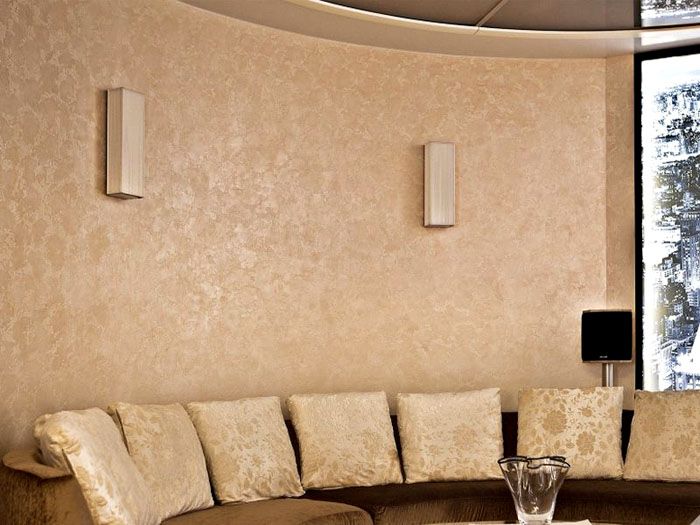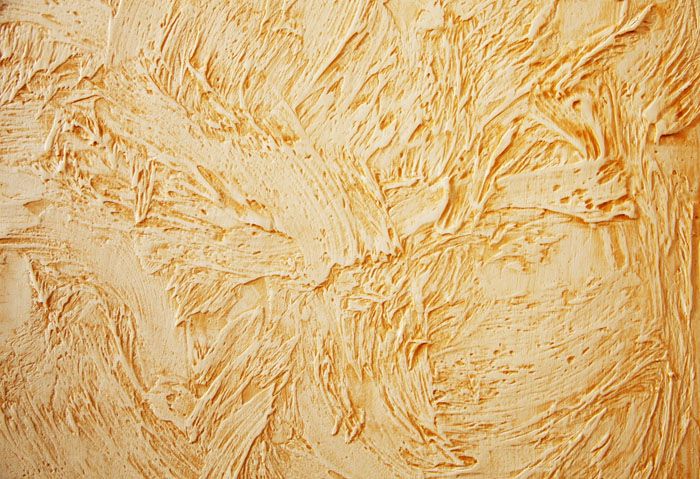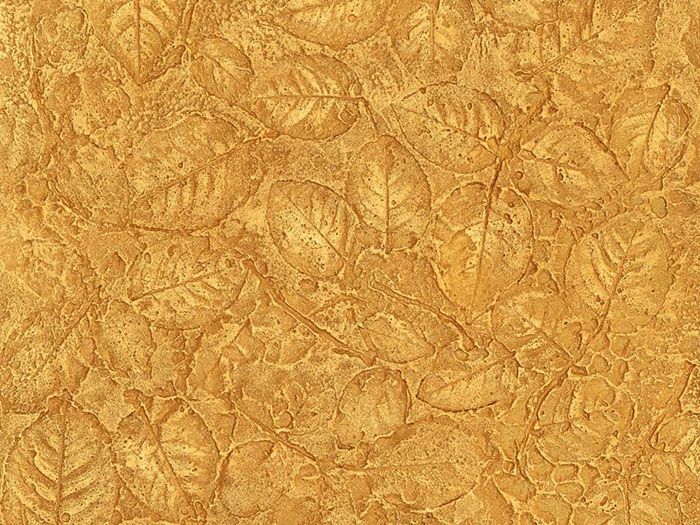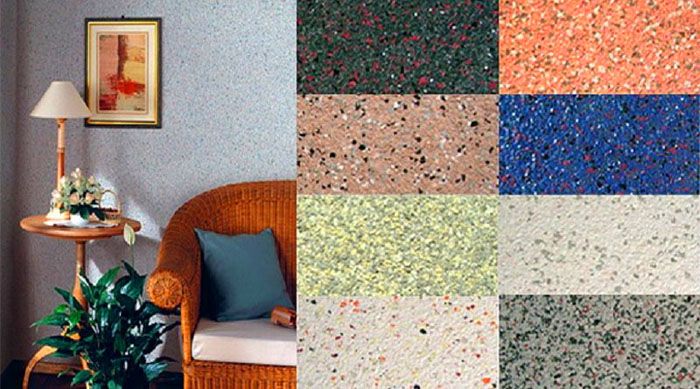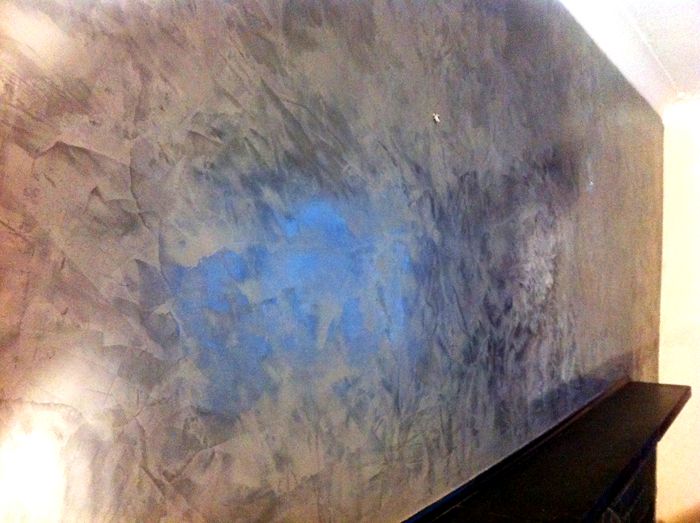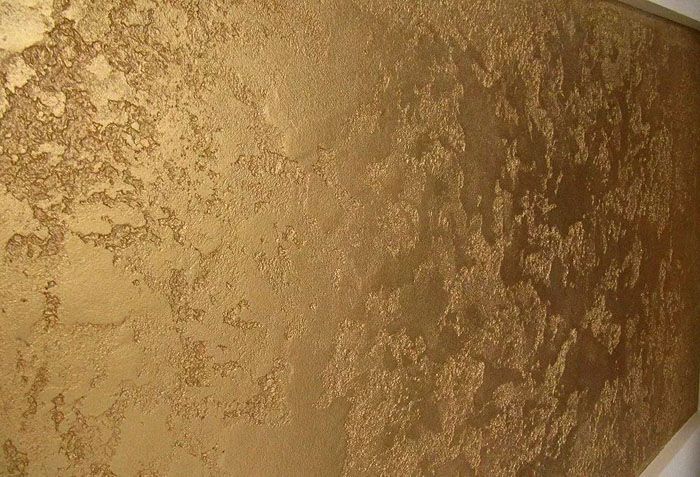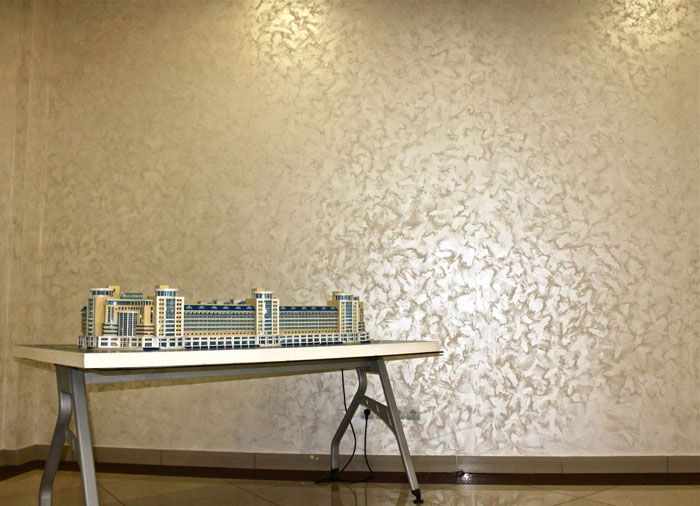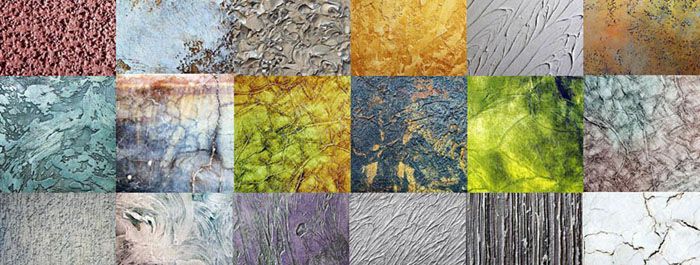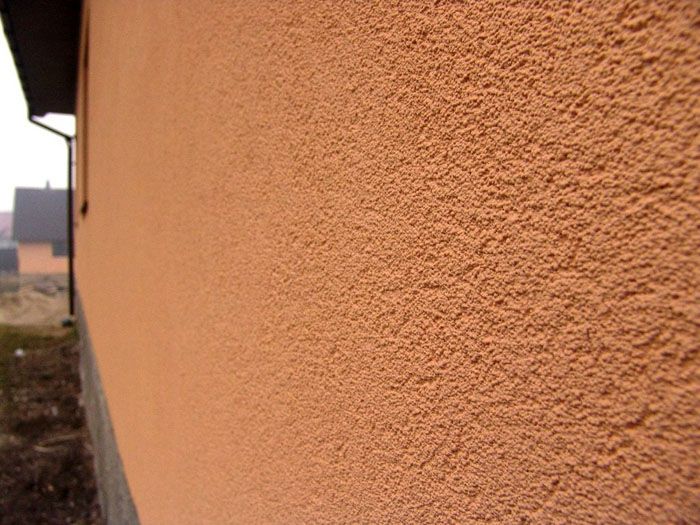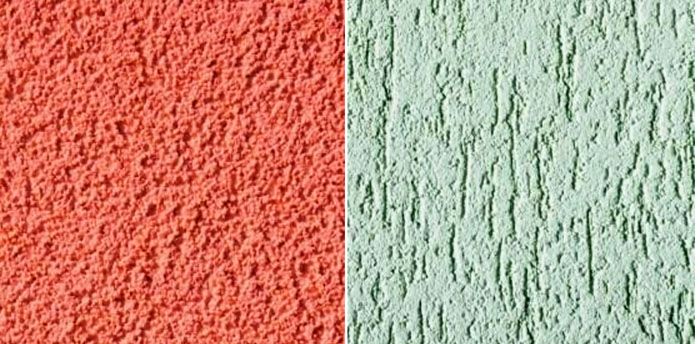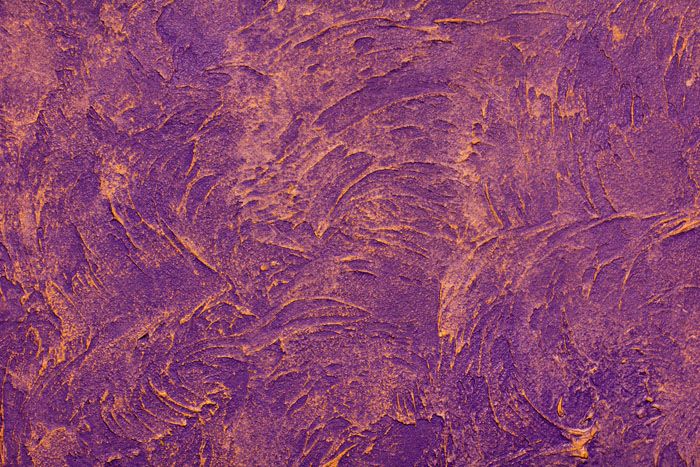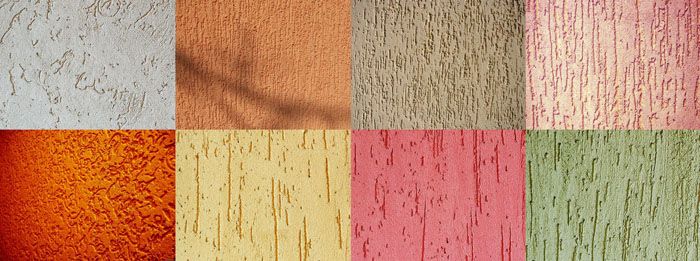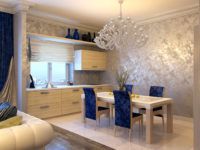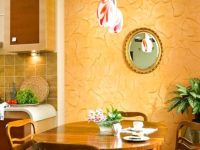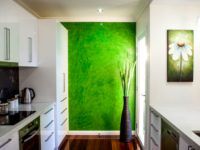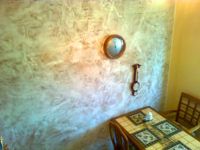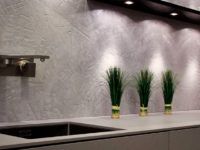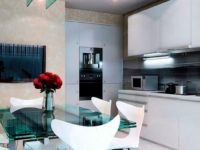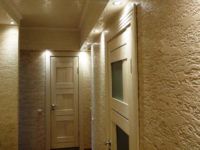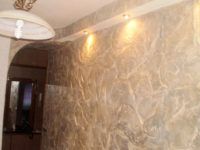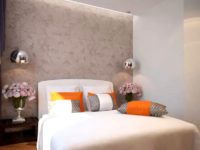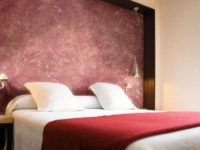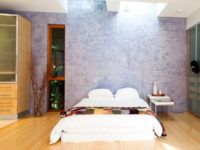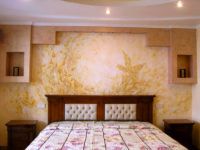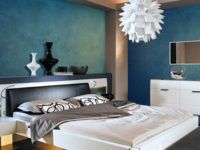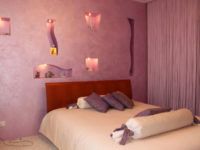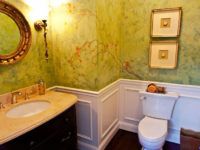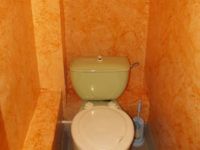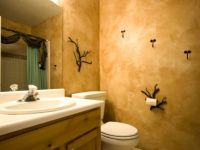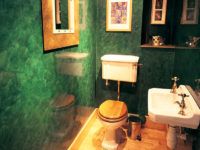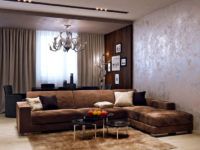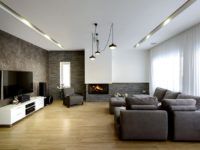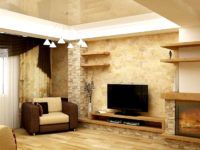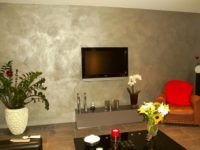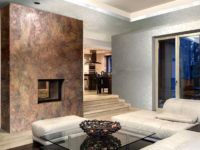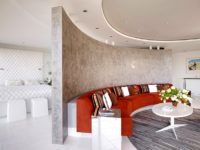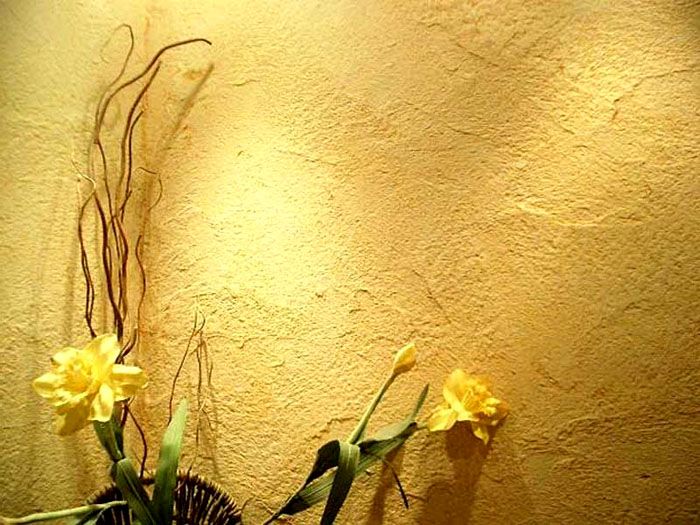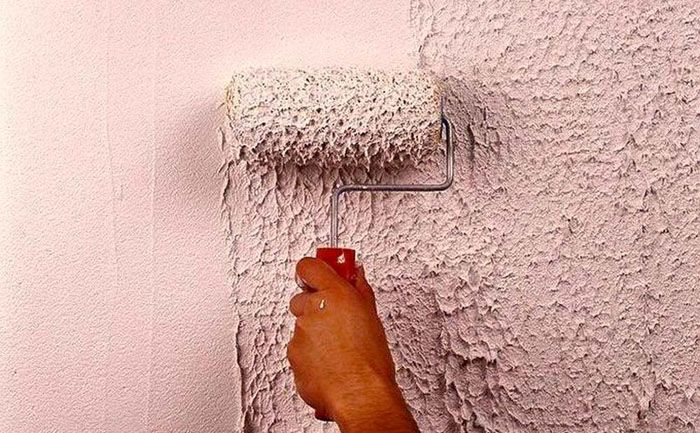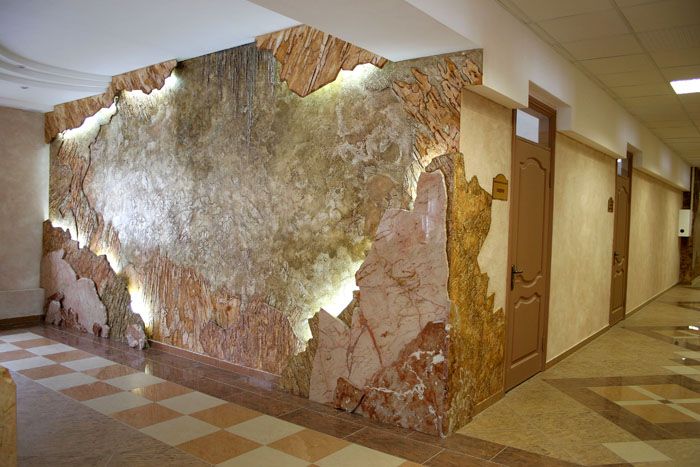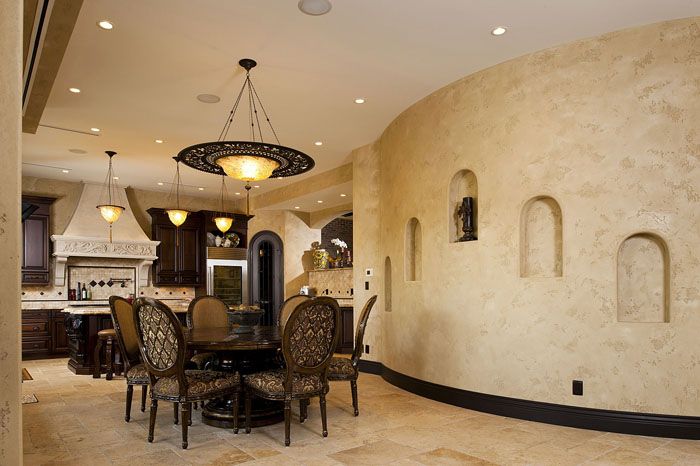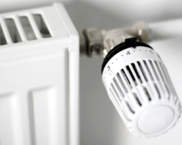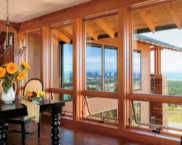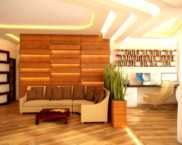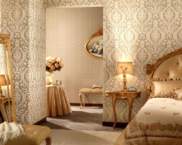Design that will amaze everyone: decorative plaster, interior photos and features of choice
To give your dwelling individuality and originality is the desire of everyone. Before a global repair, many study the Internet in search of that very highlight. If during the rough work preference is given to fundamental and classical techniques, the main goal of which is reliability, then they approach the choice of finishing materials exclusively from the point of view of aesthetics and perception. A wonderful find of designers in fine finishing is decorative plaster. You will find a lot of photos in the interior and master classes by professionals in today's review.
The content of the article
- 1 What is decorative plaster, scope
- 2 Advantages and disadvantages of decorative plaster
- 3 Types of decorative plaster, photo gallery catalog with names
- 4 The composition of the mixture of decorative plaster
- 5 Decorative plaster photo in the interior: the right choice for various rooms
- 6 Is it possible to make decorative plaster with your own hands
- 7 How to properly apply decorative plaster with your own hands
- 8 Where can you buy decorative plaster? Review of prices, catalogs, manufacturers
- 9 Conclusion
- 10 Video: DIY decorative plaster of walls with putty
What is decorative plaster, scope
In a generalized concept, decorative plaster is a pasty mass. It can be of a homogeneous consistency or interspersed, depending on the effect. With the help of such a composition, it is possible to achieve absolute similarity with natural stone (for example, marble), to imitate antique surfaces. Any kind of decoration requires preliminary preparation of the walls.
Each formulation can be water-based or solvent-based.Accordingly, decorative plaster in the first case is intended only for interior work. Photos of various interiors are presented in our gallery. Solvent-based material is used for finishing of external facades.
There is one more classification by the way of decoration:
- textured;
- decorative.
The work of the first is based on the creation of relief, the second - on the play of color.
Advantages and disadvantages of decorative plaster
Due to their physical properties, decorative compositions have a number of advantages over other finishing materials:
- strength, durability, ease of use;
- resistance to temperature changes and the perception of sunlight, to mechanical stress;
- waterproof;
- environmental friendliness;
- vapor tightness, protects surfaces from mold.
It is important! Perfect wall alignment is not required to apply the coating, just putty and prime the surface. With its help, you can mask small flaws.
Types of decorative plaster, photo gallery catalog with names
Decorating with decorative plaster can be done in any room. The main thing is right choose type and texture. Consider the main fashion trends and design interiors of different styles.
Structural mixture composition
It contains small stones. When decorating, they create unique grooves on the surfaces with the help of which you can make picturesque patterns and drawings. White decorative plaster is supplied to the retail network. If necessary, you can give the required shade using a coloring pigment.
Features of texture composition
With the help of textured finishing, you can recreate any relief on the surface: imitate wood, drops, sea foam, natural stone, snake skin. This effect is achieved due to the wide colors... The textured mixture is applicable to all interior styles. You can decorate the walls with decorative plaster in ethnic style or classics, high-tech or eclecticism. Photos of interesting designs at the end of the article confirm this.
Related article:
Textured plaster for walls. Photos, videos of interesting application options, the average price of the material, how to prepare and apply plaster yourself, and useful tips - read our publication.
What is flock plaster
It resembles a silk blend. Multi-colored flakes are added to the composition, which, after application, create an absolute illusion of natural fiber. Flock means snowflake in German. It is pleasant to the touch, looks like wallpaper.
The composition contains only natural materials. Flock plaster on the walls has good moisture and air permeability, thanks to which it is preferable for finishing bathrooms, bedrooms, children's rooms... Even with high humidity, fungus and mold do not appear on surfaces.
Composition of marble plaster
The composition includes small fractions of marble. Due to the different sizes of additives, it is possible to obtain an imitation of natural stone on the surface. The appearance of the coating looks expensive and graceful.
Marble gives the finish strength and reliability, thanks to which it will last for a long time, without losing its original qualities. Marble plaster is not afraid of temperature and humidity changes. The coating is suitable for interior decoration of both apartments and public premises.
Varieties of Venetian
This is one of the most luxurious finishing materials that came to us from Ancient Rome. Currently, Venetian plaster is used to create expensive interiors.On the wall, the finish resembles natural stone.
The composition may include fine crumbs:
- marble;
- quartz;
- granite;
- onyx.
In order to create an imitation of a natural surface, it is necessary to use a mixture of two to ten similar shades. After all layers have been applied, the surface must be sanded. With the right color matching, a sophisticated finish can be achieved to suit a variety of designs.
Related article:
Venetian plaster. In the publication we will consider what it is, coating features, types, composition, nuances of self-production of plaster, application technique, popular manufacturers, recommendations of specialists.
Silk plaster: photo in the interior
Thanks to the softness of the silk finish, the velvet imitation surface looks very delicate. It seems to shimmer with a mother-of-pearl shine. Such a coating is suitable for interior decoration in classic style or in modern directions. It will look especially good in the bedroom interior. Photo of decorative plaster "Wet Silk" confirms this.
The composition of the mixture of decorative plaster
Plaster can be used to create sophisticated accents and reliefs on walls. It seems that only professionals can do it. It's not like that at all. Of course, skill plays a big role, but a lot depends on the composition. Special additives help create a real masterpiece on surfaces. And for this you do not need to purchase expensive tools at all. It is important to apply the mixture correctly and understand the basic rules of the technological process.
Any decorative plaster contains:
- the main link;
- filler to give a decorative effect;
- various additives that serve to change the physical characteristics of the material;
- water or solvent.
Depending on the percentage of constituents and filler, various surface effects can be achieved.
Cement mixtures
Cement decorative plasters on walls are mainly used for external finishing of facades... Various additives increase the physical characteristics of the mixture. In addition, finely dispersed additives can be included in the composition to add decorative effect to the finish. An example is mixture "Bark beetle", which includes a fine fraction of crushed granite.
Cement decorative material has several advantages:
- increased strength;
- resistance to fire, does not emit toxic substances;
- low cost;
- you can give any shade with a pigment.
Acrylic compounds
Such finishing mixtures are made on the basis of acrylic resins. This is the most budgetary of all decorative plasters. Due to its increased moisture resistance, it can be used for bathroom finishes and other rooms with high humidity. It is not necessary to pre-align the walls, but be sure to prime them before applying the composition.
It should be noted that there is a significant drawback of plaster - flammability precisely because of the presence of acrylic resins. In addition, it loses its physical properties at the end of its shelf life.
Silicate compounds
Silicate mixtures are suitable only for finishing the external facades of houses due to the release of harmful substances. The main drawback is the poor color scheme. The composition is sold ready-made and painted. It will be quite difficult for a beginner to work with such a material, in addition, it dries quickly.
The advantages of the mixture include:
- increased vapor permeability;
- plastic;
- resistance to pollution.
Silicone mixtures
They are suitable for both outdoor and indoor use. The composition can be chosen already painted, or you can tint it yourself. This is a rather expensive coating. In addition, a preliminary priming of surfaces with a special compound is required, which is not cheap. Silicone resins act as a connecting link. Manufacturers offer a wide range of colors.
The mixture combines all the advantages of decorative plasters:
- resistance to high humidity, corrosive environments and sunlight;
- high plasticity.
With the help of washable decorative plaster on the walls, you can create real relief masterpieces.
Decorative plaster photo in the interior: the right choice for various rooms
When choosing a finish, you must adhere to a few professional tips:
- need it right calculate the area of the room, taking into account that some compositions need to be applied in 2 or more layers;
- features of the surface of the ceiling or wall. Decorative plaster, depending on the additives, is intended for different surfaces. Some formulations require an almost perfectly aligned base;
- functional purpose of the room. If any composition can be applied to living rooms, then there are special requirements for high humidity.
Related article:
Decorative plaster for interior wall decoration. This article will discuss the types of wall plaster, the tools required for its application, and the technology for applying the coating.
Decorative plaster in the kitchen: types and photos in the interior
An acrylic mixture is suitable for finishing the kitchen. It will withstand all extreme conditions: cooking, increased steam generation, temperature drops, humidity. In addition, it is UV resistant, breathable, and protects substrates from mold and mildew formation.
After applying the decorative layer, be sure to cover the surface with wax or special protection. They will help to keep the original look and make maintenance much easier. For periodic cleaning, you just need to wipe the surface with a damp sponge.
To determine the choice, look at the photo of decorative plaster in the interior of the kitchen:
Photo catalog of decorative plaster in the interior of the corridor
For hallway you need to select a durable composition that is resistant to high humidity. To do this, just read the packaging carefully. The technical parameters and recommendations are indicated by the manufacturer. In the catalogs you can see examples of work. If space permits, it is advisable to carry out a Venetian finish. It is important to apply a protective wax at the final stage.
Photos of decorative plaster in the interior of the hallway are presented in our gallery below:
Decorative plaster in the bedroom
Flock plaster is suitable for the bedroom. Natural "snowflakes" are the most environmentally friendly type of room decoration. You can diversify the finish by using a composition with larger fractions as an accent. To create a comfortable interior or to emphasize architectural elements, muted shades can be used.
Photo catalog of decorative plaster in the toilet
For the bathroom, you should choose only moisture-resistant compounds, then subsequently the decorative finish will not bring surprises in the form of bubbles, mold or exfoliated elements. You can use compounds for outdoor use:
- silicone;
- mineral;
- acrylic;
- silicate.
Decorative plaster in the living room
The living room can be finished with decorative plaster on one surface in combination with other materials such as wallpaper, wood or stone panels. You can add stucco as decoration. This is suitable for interior decoration in a modern classic style.
During the finishing, you need to be guided by the basic design techniques:
- to visually increase the area, you should focus on light shades, preferably with a light reflection effect;
- in order to add luxury and wealth to the room, it is necessary to choose Venetian or Leonardo plaster. The photo in the interior clearly demonstrates this.
Is it possible to make decorative plaster with your own hands
Decorative plaster is an excellent finishing material that not everyone can afford because of the cost. But knowing and understanding the physical properties of materials, you can prepare it yourself. It is important that the composition meets two requirements:
- for some time retained plasticity in order to make a relief surface;
- the required strength after curing was ensured for operation while maintaining the original characteristics for at least 10 years.
We offer in our article several recipes for making a mixture with your own hands:
| Components | number | Cooking sequence |
|---|---|---|
| Option 1 | ||
| PVA glue - 0.8 kg. | 0.8KG | Combine and mix all components with a mixer. Apply to the wall surface in any convenient way. The only drawback of the composition is the long drying time. |
| 5% solution of CMC - 2 kg (soak according to the instructions on the package). | 2 Kg | |
| 10% solution of laundry soap. | Dissolve to a gelatinous state | |
| Calcium carbonate (chalk powder) or gypsum. | 6.5 kg | |
| Option 2 | ||
| Washed and sieved river sand. | 3 parts | Mix all dry components, add water and mix well. |
| Finished dry thin plaster putty. Presence of mineral additives is desirable. | 5 parts | |
| Ready-made dry mix of gypsum with polymer additives | 1 part | |
| Option 3 | ||
| Deep penetration primer. | Dilute with water in a 2: 1 ratio | After mixing, the mixture should stand for 5-10 minutes, then stir again to completely remove air. |
| Finished dry thin plaster putty. Presence of mineral additives is desirable. | Add to the diluted primer until a pasty state is obtained. | |
Related article:
Do-it-yourself textured plaster from ordinary putty. In this article, we will look at how you can make several structure options using various tools.
How to properly apply decorative plaster with your own hands
The great advantage of decorative finishes is that it does not require the purchase of expensive tools. There are a few simple application techniques. You don't need to be a professional to do this. While working, you can feel like an artist, completely controlling the process. Photos of decorative plaster on the walls will help you decide on the final decision.
Before starting repairs, all surfaces must be primed. Then apply the mixture spatula (with a trowel or roller) on the base with a layer up to 5 mm thick, it is desirable to cover a larger area. Then you can use different tools to create interesting patterns:
- with a spatula in a circular motion or strokes up / down, distribute the composition over the base;
- distribution with a large brush gives a wavy relief;
- using a toothed roller or trowel;
- crumpled polyethylene will create a non-standard pattern on the surface.
The hardening time of the composition depends on the number of layers and the type of mixture. It may take up to 48 hours, after which the surface must be coated with a protective wax.
The video below presents rather complex techniques for applying the composition:
Where can you buy decorative plaster? Review of prices, catalogs, manufacturers
On trading floors, decorative materials from different manufacturers are offered. This is not a cheap product, so the choice should be taken very carefully. It is necessary to study all the characteristics of the material, as well as see reviews on the quality of decorative plaster.
In general, decorative compositions can be divided into three price categories:
- budgetary worth 150 - 500 rubles. for 1 sq. m. They are represented by manufacturers:
- Ferrara Design (Italy);
- "Knauf" (Germany);
- Decorazza (Russia);
- Bayramix(Russia-Turkey);
- "VGT" (Russia);
- average cost RUB 500-1000 for 1 sq. m. They are produced:
- "Oikos", Ferrara Design (Italy);
- Natura Interior, "Pratta", "San Marco", "Clavel" (Russia);
- plasters premium class cost from 1000 rubles. for 1 sq. m. They are produced only by foreign companies:
- "Baldini";
- "Sammarinese";
- "Giorgio Graesan".
Conclusion
Decorative plaster is a great alternative to the already boring wallpaper or usual painting... Its service life exceeds 10 years, it has excellent characteristics for its use as a main finish. In addition, you can show your creativity and make your wildest fantasies come true. The author's soul and the warmth of his hands will be put into every millimeter of the surface. This will not leave anyone indifferent.
What do our readers think about this? Could you apply a smooth decorative plaster yourself? Which line-up would you prefer? We are waiting for your responses in the comments.
We suggest looking at a detailed description of the work on applying the composition.




